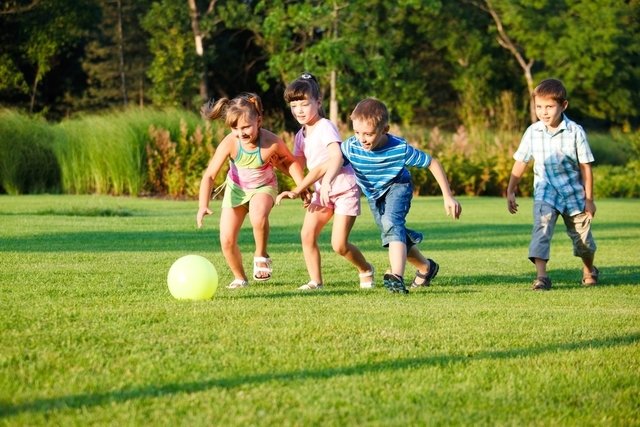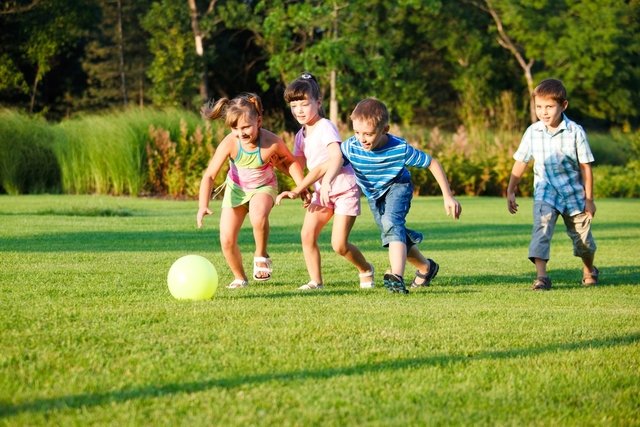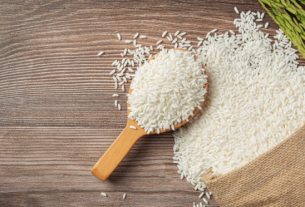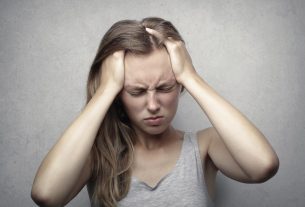Children can and should do physical activity regularly because exercise improves their intellectual development, making them smarter and more intelligent, and also their motor development, by strengthening bones and increasing elasticity. Furthermore, children have less capacity to produce lactate and, therefore, do not have sore or tired muscles after exercising.
Practicing exercise in childhood brings many benefits to the child’s development and should always be encouraged. If the child has rhinitis, sinusitis, heart disease or is over or underweight, it is recommended that the pediatrician be consulted so that some assessments can be carried out to check whether any special care is necessary when performing the exercise.

5 benefits of physical activity in childhood
The main benefits of physical activity in childhood are:
1. Stronger bones
The best exercises to practice in childhood are those that produce some impact, such as running or football, because this way there is better bone development, in a short time, which reduces the risk of osteoporosis in adult life, which can be reflected even years later. , in menopause.
2. Taller children
Physical activity favors children’s growth because when muscles are contracted, bones respond by becoming larger and stronger, which is why active children tend to develop better and are taller, when compared to those who do not do any type of physical exercise. .
However, a child’s height is also influenced by genetics and, therefore, younger or older children are not always like that because they have or have not practiced physical activity, despite exercise having an influence.
3. Reduced risk of a sedentary lifestyle in adulthood
Children who learn to exercise from an early age, whether by taking swimming lessons, ballet or at football school, there is less chance of becoming a sedentary adult, thus improving their quality of life, by reducing the risk of heart problems and events such as heart attack or stroke.
4. Improves self-esteem
Children who exercise more have more self-esteem, are happier and more confident and also enjoy sharing their achievements and feelings more, which can also be reflected in adult life, becoming healthier adults. The ease with which they show what they feel during classes also helps parents and teachers understand their frustrations, making daily dealings easier.
5. Maintaining adequate weight
Exercising from childhood helps maintain an ideal weight, being useful for those who are within their weight and especially for those who need to lose a little weight because the caloric expenditure of exercise contributes to burning fat that may already be accumulated within your little ones. blood vessels.
Find out if your child is within the recommended weight for her age by entering her data into the calculator below:
8 Best exercises to practice in childhood
All physical activity is welcome and therefore parents and children can choose together which activity they will participate in, taking into account the child’s physical type and characteristics because not everyone is capable of everything. Some good options are:
- Swimming: It improves breathing and cardiovascular conditioning, but as it has no impact on bones, swimming does not increase bone density;
- Ballet: Ideal for improving posture and increasing the flexibility of muscles and joints, favoring a slender and elongated body;
- Race: Strengthens bones more than swimming;
- Artistic gymnastics: It has a lot of impact, strengthening bones;
- Judo and Karate: It teaches you to respect rules and control movements well, as it has a good impact and is great for strengthening bones and stimulating growth;
- Jiu-jitsu: Due to physical touch, proximity to others and the need to look the partner in the eye during training, the child becomes more self-confident and less shy;
- Basketball: The bounce of the ball helps strengthen the bones in your arms;
- Soccer: As it includes a lot of running, it is a great exercise for strengthening the bones in your legs.
Regarding bodybuilding, it is important to consult your pediatrician before starting this activity, and it may be recommended that going to the gym does not happen more than 3 times a week and the load is low, giving preference to the highest number of repetitions. Therefore, parents who like and practice bodybuilding do not need to be afraid of enrolling their children in gyms, as long as the exercises are guided by competent professionals and who are aware of mistakes that can be made while performing the exercises.
What is the most suitable exercise according to age?
Common risks
The most common risks during exercise in childhood involve:
- Dehydration: Due to the difficulty in regulating your body temperature, you are more likely to become dehydrated if you do not drink fluids during activity. Therefore, it is important that every 30 minutes of activity the child is offered some water or natural fruit juice, even if they are not thirsty.
- Bone fragility in athletes: Girls who exercise more than 5 times a week over the years, contrary to popular belief, may have more bone fragility due to a reduction in estrogen in the bloodstream.
When children follow the recommendations to drink fluids during training, protect themselves from the sun, and avoid the hottest hours of the day, the risk of dehydration decreases drastically.
Transforming physical activity classes into moments of pleasure instead of hours of training for athletes has more benefits during childhood because in addition to not demanding too much from your psychology, there is less risk of fragile and brittle bones due to excessive physical activity.
Bibliography
- MINISTRY OF EDUCATION AND SCIENCE. Physical Activity and Health in Childhood and Adolescence Guide for all people who participate in their education. 2006. Available at: <https://www.sanidad.gob.es/ciudadanos/proteccionSalud/adultos/actiFisica/docs/ActividadFisicaSaludEspanol.pdf>. Accessed on January 21, 2022
- SEATTLE CHILDREN´S. Exercise and Kids Help Your Child Keep Moving. 2018. Available at: <https://www.seattlechildrens.org/pdf/ce385s.pdf>. Accessed on January 21, 2022
- FENÁNDEZ, Mariano; BUSTO, José. The child and sport. Ortho-tips. 5. 1; 7-27, 2009
- UNICEF. Physical activity in boys, girls and adolescents. 2019. Disponível em: <https://www.unicef.org/uruguay/media/2276/file/La%20actividad%20f%C3%ADsica%20en%20ni%C3%B1os,%20ni%C3%B1as%20y%20adolescentes.pdf>. Acesso em 21 jan 2022
-
Referring to: “Child BMI Calculator”:
- OMS. WHO growth curves. Available at: <https://www.who.int/childgrowth/standards/es/>. Accessed on Jul 15, 2021

Sign up for our newsletter and stay up to date with exclusive news
that can transform your routine!
Warning: Undefined array key "title" in /home/storelat/public_html/wp-content/plugins/link-whisper-premium/templates/frontend/related-posts.php on line 12
Warning: Undefined array key "title_tag" in /home/storelat/public_html/wp-content/plugins/link-whisper-premium/templates/frontend/related-posts.php on line 13





